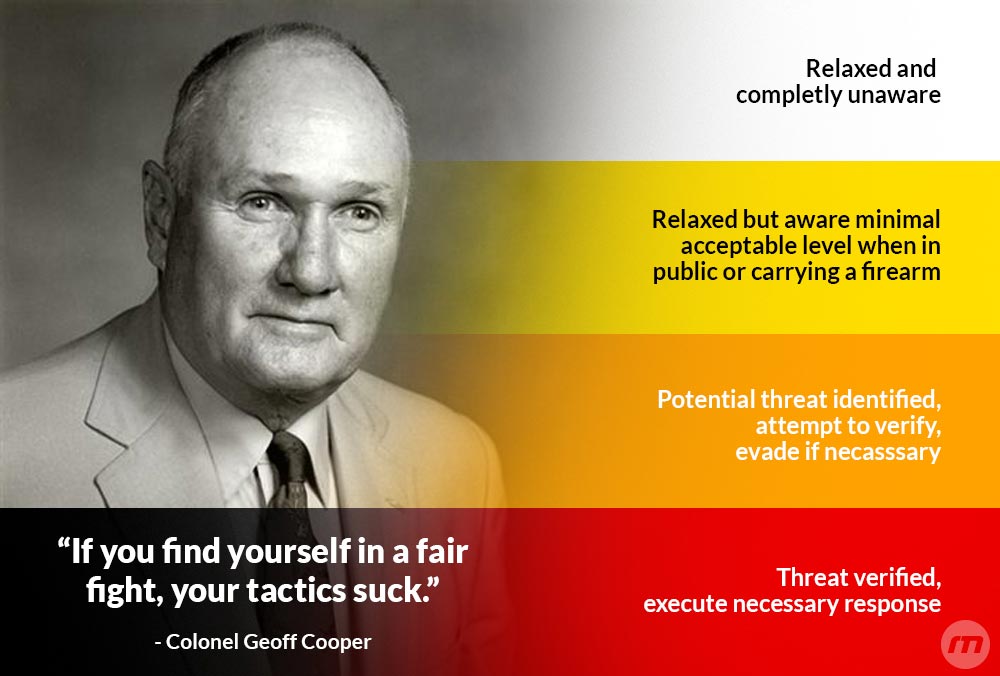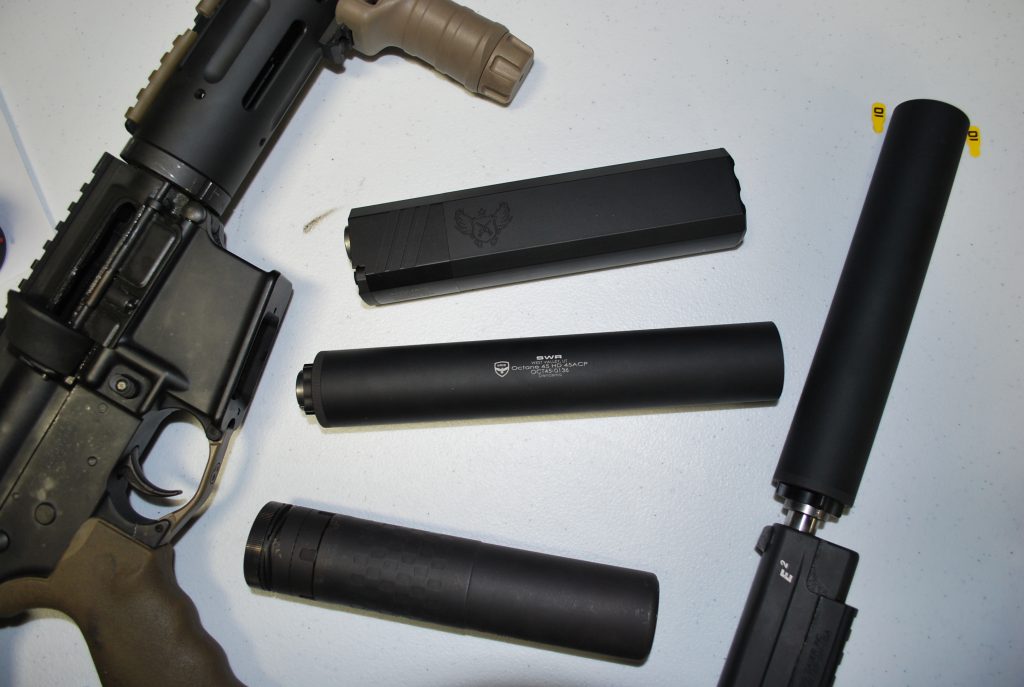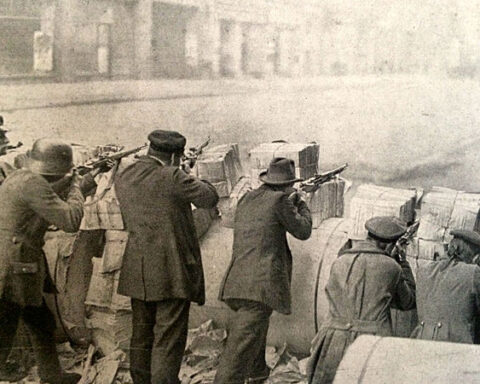Jeff Cooper’s “Color Code” wasn’t original meant to designate awareness but rather the state of mind during a conflict. Somewhere along the way, people realized it also tied into what state of awareness you are in at any given time.
The following is from The Carry Book: Minnesota Edition, 2011: [1]
- White: Unaware and unprepared. If attacked in Condition White, the only thing that may save you is the inadequacy or ineptitude of your attacker. When confronted by something nasty, your reaction will probably be “Oh my God! This can’t be happening to me.”
- Yellow: Relaxed alert. No specific threat situation. Your mindset is that “today could be the day I may have to defend myself”. You are simply aware that the world is a potentially unfriendly place and that you are prepared to defend yourself, if necessary. You use your eyes and ears, and realize that “I may have to shoot today”. You don’t have to be armed in this state, but if you are armed you should be in Condition Yellow. You should always be in Yellow whenever you are in unfamiliar surroundings or among people you don’t know. You can remain in Yellow for long periods, as long as you are able to “Watch your six.” (In aviation 12 o’clock refers to the direction in front of the aircraft’s nose. Six o’clock is the blind spot behind the pilot.) In Yellow, you are “taking in” surrounding information in a relaxed but alert manner, like a continuous 360 degree radar sweep. As Cooper put it, “I might have to shoot.”
- Orange: Specific alert. Something is not quite right and has your attention. Your radar has picked up a specific alert. You shift your primary focus to determine if there is a threat (but you do not drop your six). Your mindset shifts to “I may have to shoot that person today”, focusing on the specific target which has caused the escalation in alert status. In Condition Orange, you set a mental trigger: “If that person does “X”, I will need to stop them”. Your pistol usually remains holstered in this state. Staying in Orange can be a bit of a mental strain, but you can stay in it for as long as you need to. If the threat proves to be nothing, you shift back to Condition Yellow.
- Red: Condition Red is fight. Your mental trigger (established back in Condition Orange) has been tripped. “If ‘X’ happens I will shoot that person” — ‘X’ has happened, the fight is on.
Most people live in Condition White, all the time. When the fight is on, Condition White either leads to death or Condition Red. And sometimes Condition Red hits right before death.
Most Americans hum along just fine for years and years without making the change to Condition Yellow, even when the opportunity calls for it.
When you leave your house, you need to be in Condition Yellow. If you work in an office, like most of America, it’s easy and natural to slip back into White. Yellow takes mental power and, if you are just starting out, it’s going to be harder than you think. If you are in familiar surroundings, slipping back into White isn’t a poor choice. But remember to move back to Yellow a few times a day. It’ll get easier with practice.
Quick exercise:
When you are out and about, take a second to glance at a scene, say in the mall or in a restaurant, close your eyes or look away, and see what details you can remember, like how many people are at two tables over, or how many people are wearing hats. This is also a good thing to do with a partner. One of you can ask the questions and check then you can switch roles.
It takes practice. Most of us in the USA have never needed to hone these skills. There is no time like the present to start.
Condition Orange. This is why you need to be armed with a CCW. If you ever get into Orange, and in today’s world that isn’t something so rare, you can’t be thinking “If I only hadn’t left my firearm on the dresser/glove compartment/never-bought-one-because-nothing-bad-happens-around-here” That’s a good way to end up as a statistic. You don’t want to be a statistic. We don’t want you to be one.
You cannot influence your fate if you don’t have the right tools.
Condition Red. Hopefully, most of us will never be here. We don’t want to be here. This is not the goal. But, should you get dealt a bad hand, this is where all the time at the range is going to pay off. This is why you practiced being in condition Yellow. This is why you have your CCW on you. This is when you are going to see what you are made out of with no bullshit. If you end up here, may the Lord protect and guide you, remember to keep your wits, make the best decisions you can, and you’ll have the opportunity of keeping you and yours safe.
For the readers that have had experience, how do you train for condition Yellow?
[1] https://books.google.com/books?id=2UNCAgAAQBAJ&pg=PA52#v=onepage&q&f=false










FWIW, unless you have a specific interest that needs your protection, Orange is also the point at which you need to immediately seek egress. It’s better to not be there when “it goes down” than to have been as prepared as possible and still deal with the risk of largely random outcomes.
Excellent point.
If you can get the hell out of Dodge, do it.